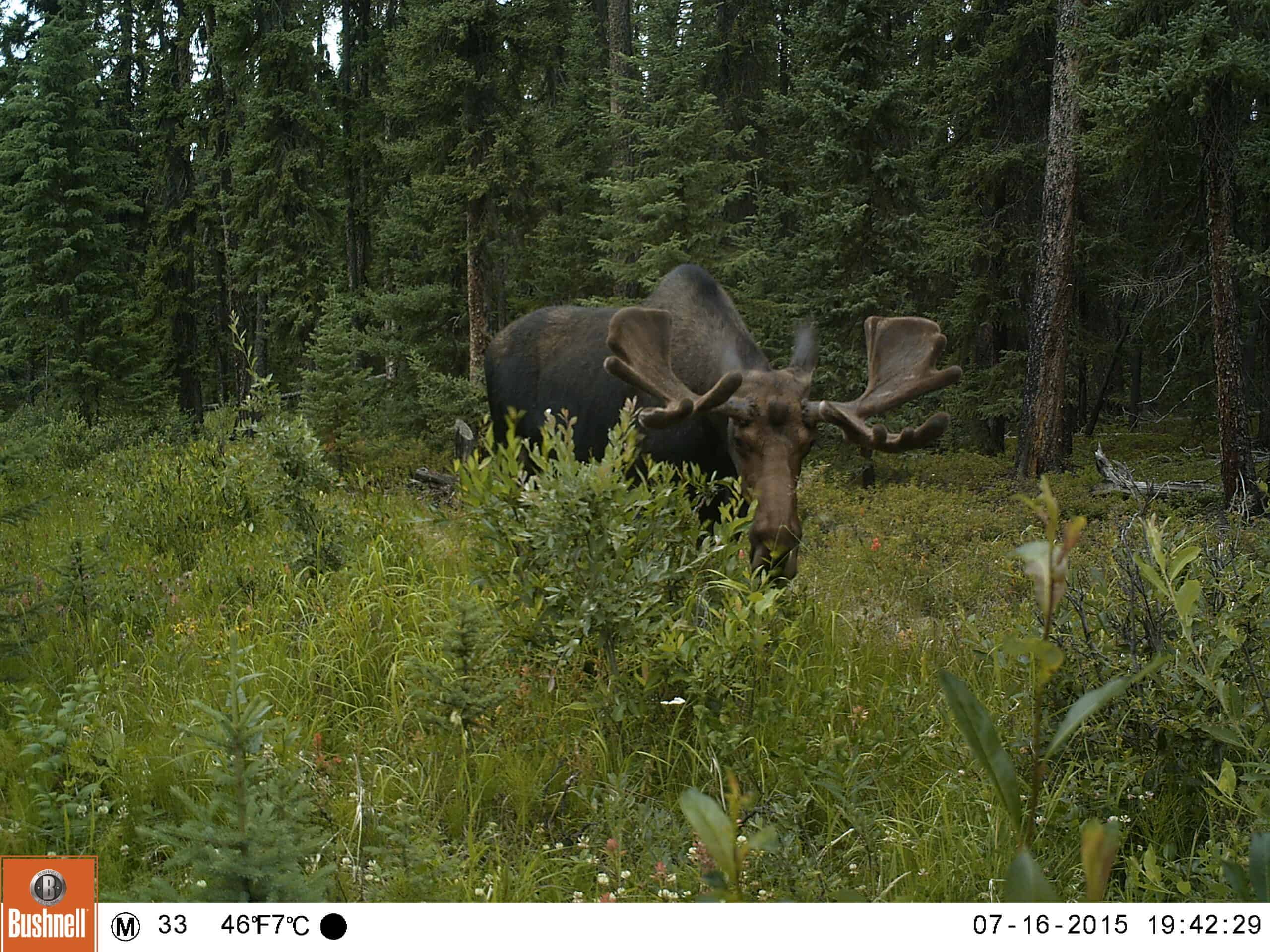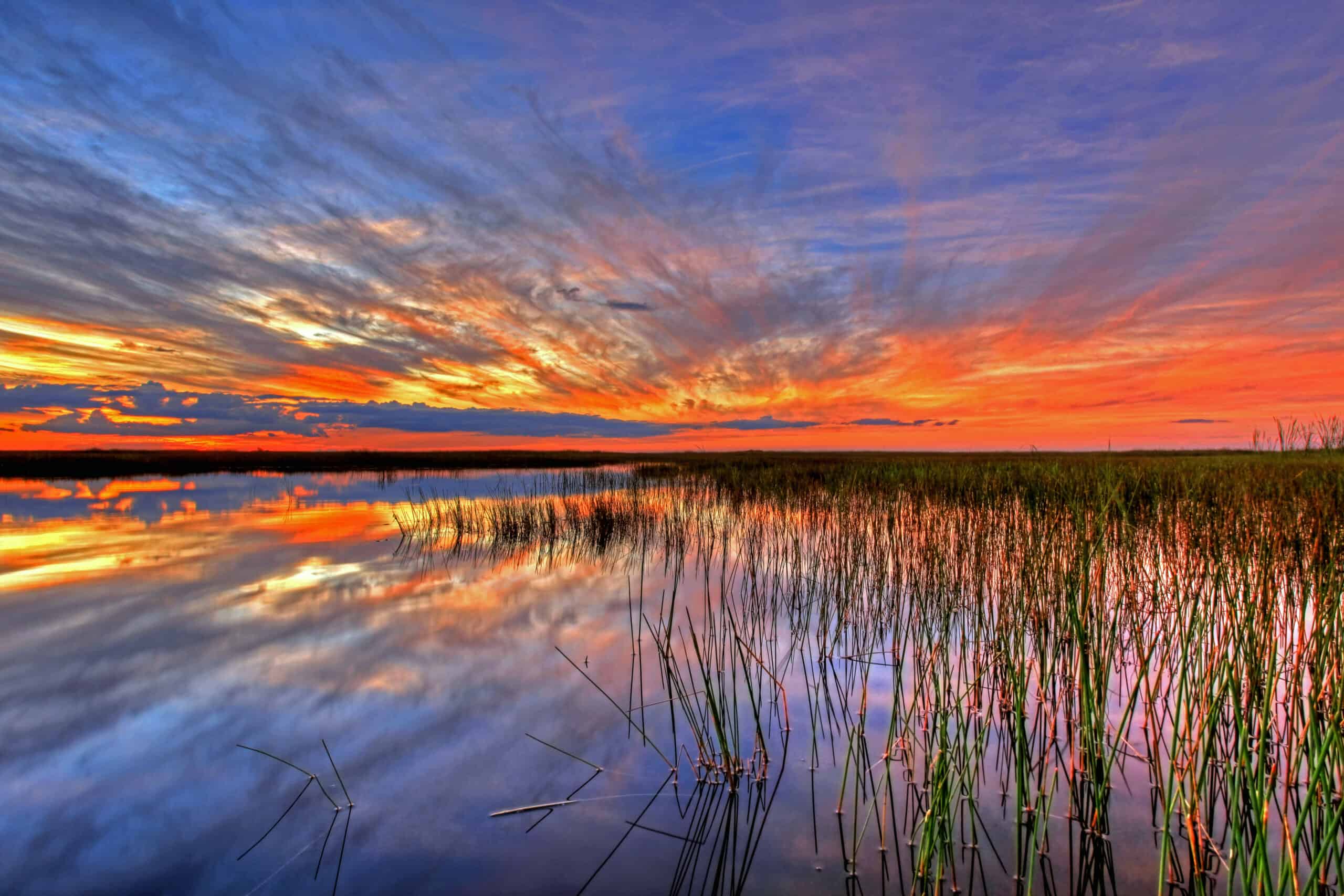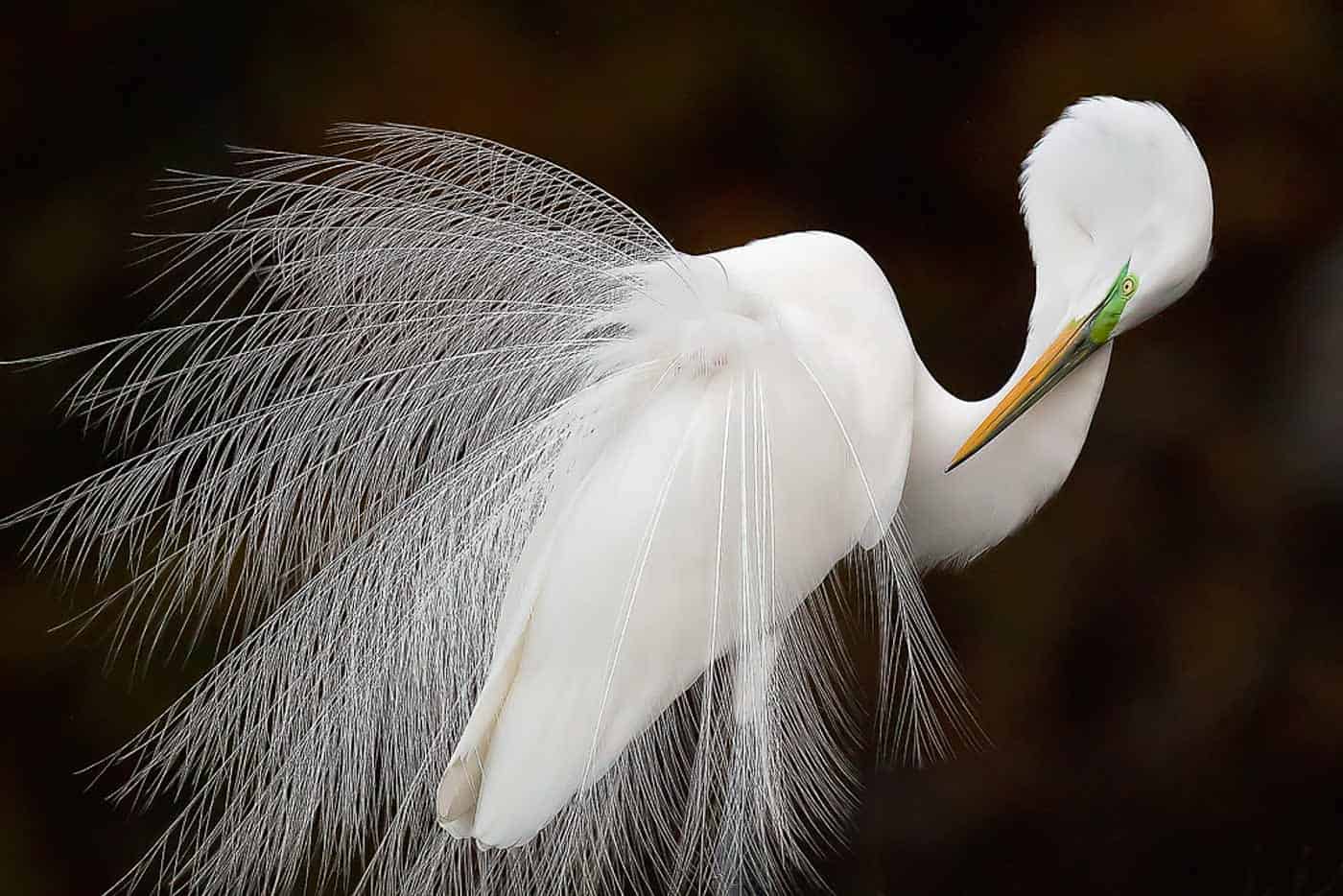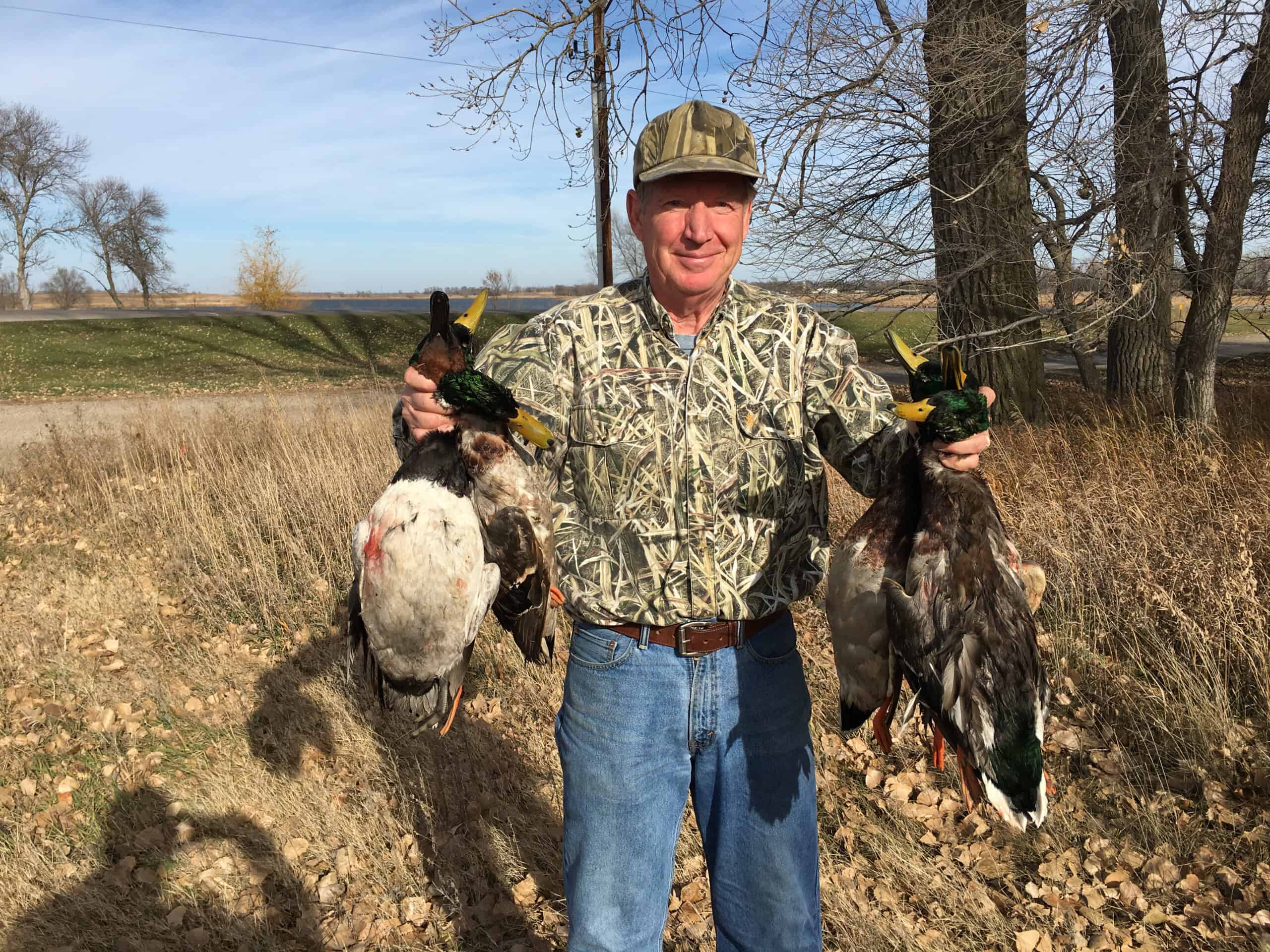Share this article
Wildlife Featured in this article
- moose
- caribou
- gray wolf
Moose gravitate toward seismic lines
The species prefer the younger forest along the seismic survey lines
Efforts to restore seismic survey lines, which cut through huge swaths of western Canadian land, to their more natural state may improve caribou habitat. But these restoration efforts may also make moose less likely to use some areas.
The oil and gas industry cuts seismic lines through the boreal forest while surveying for fossil fuels. Older seismic lines were made using large wood chippers that cut kilometers-long paths a little narrower than a single-lane road straight through the trees. These machines—and subsequent traffic on these paths by ATV users—compact the ground. As a result, the forest doesn’t grow back the same way as it would in these areas compared to areas cleared by natural wildfires.
“These seismic lines are a large part of the human footprint in caribou ranges,” said Laura Finnegan, a wildlife biologist at fRI Research, a nonprofit science organization based in Hinton, Alberta.
Wolf super highways
Previous research has shown that predators like wolves (Canis lupus) use these paths like super highways to access parts of the deeper forest they wouldn’t normally use. “There is evidence that wolves travel faster on these lines,” Finnegan said.
In effect, this means they come into contact more often with caribou (Rangifer tarandus), which usually prefer deeper patches of old growth forest with plenty of lichen understory to feed on. This is thought to be one of the reasons for the caribou decline in parts of western Canada.
“Caribou are very sensitive to habitat disturbance,” Finnegan said.
Wildlife managers have been working to restore some of these seismic lines to a more natural forest, with varying results, for some time.
But Finnegan and her colleagues wanted analyze how moose (Alces alces) used the cutlines to see how the habitat restoration efforts—or the lack thereof—may affect them.
In a study published recently in Ecosphere, they used data gathered from a previous study tracking moose with GPS collars in west-central Alberta conducted by researchers from the University of Montana. They combined this with light detection and ranging (LiDAR) surveys of the cutlines to determine the degree to which the forest had recovered.
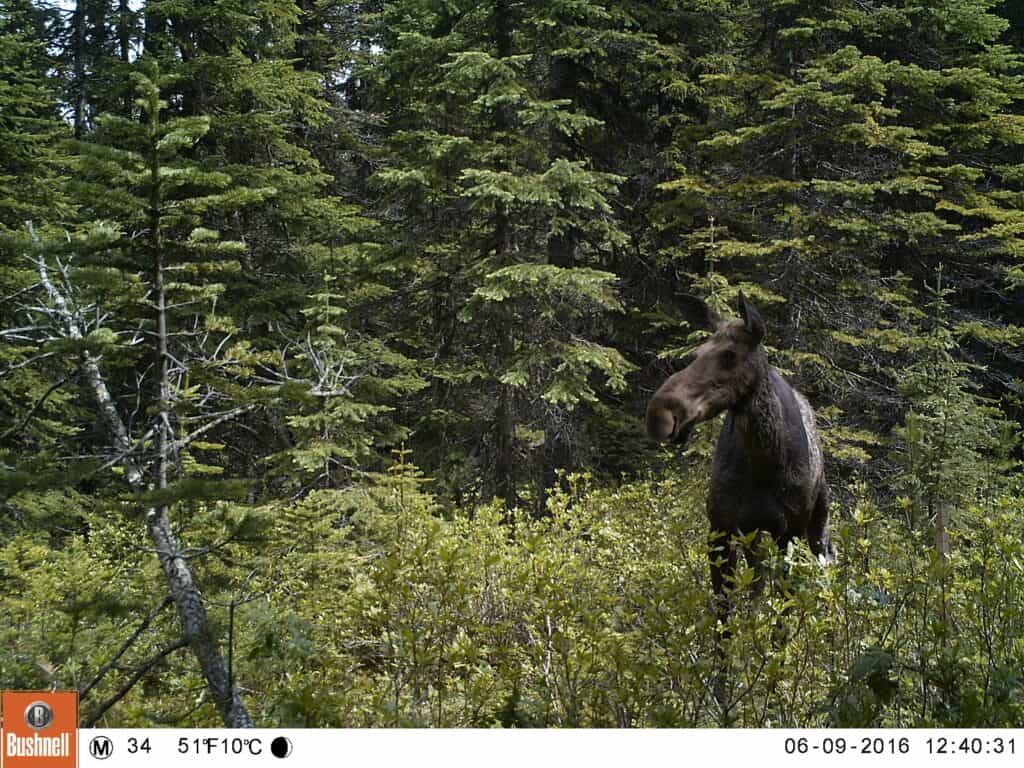
Forage lines
Wildlife biologists already knew that moose like young forests. The data Finnegan’s team used revealed this seemed to ring true for seismic cutlines as well. “A lot of the vegetation growing on seismic lines is good for moose,” she said.
Moose were often found close to seismic lines, especially during the winter, the GPS data revealed. And when there were less seismic lines around, they were found even more often around the few that were on the landscape. Moose even seemed to prefer seismic lines to other types of linear cuts like harvest blocks and buried pipelines.
At a finer scale, the researchers found that the moose seemed to use the seismic lines regardless of the vegetation height. Finnegan said this indicates they were using these lines not just for movement but for a mixture of movement and food.
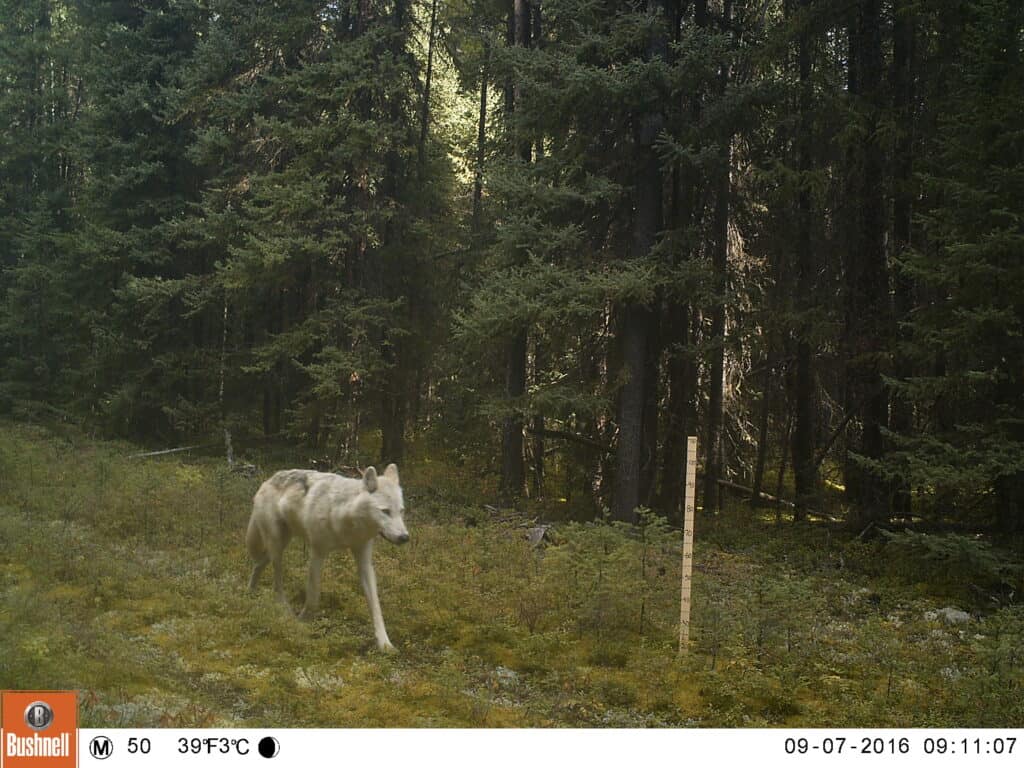
Good for moose, bad for caribou
Other research has found that the presence of moose is often bad for caribou. Most of the time, moose and caribou occupy different kinds of ecosystems—moose prefer more open areas, and caribou prefer old growth forest. These seismic lines are good for moose, but they also bring in more of the predators that follow them.
“It’s a double-edged sword with caribou losing all the time,” Finnegan said.
She said this research reveals that if land managers convert cutlines back to habitat for caribou, they have to think about the bigger picture. If they just restore some lines but leave others in the same vicinity, it may just funnel the moose and wolves that follow them onto the remaining lines—areas where caribou, as a result, are more likely to die.
Just the same, if wildlife managers want to keep moose on the landscape in other areas, they may need to reconsider restoring seismic lines to natural habitat to begin with.
“When it comes to habitat restoration, we need to understand how it will affect the ecosystem as a whole,” Finnegan said. “We don’t want conservation efforts focused on caribou to have unintended and negative impacts on moose.”
Header Image: Moose were often found on or near seismic survey lines. Credit: fRI Research



